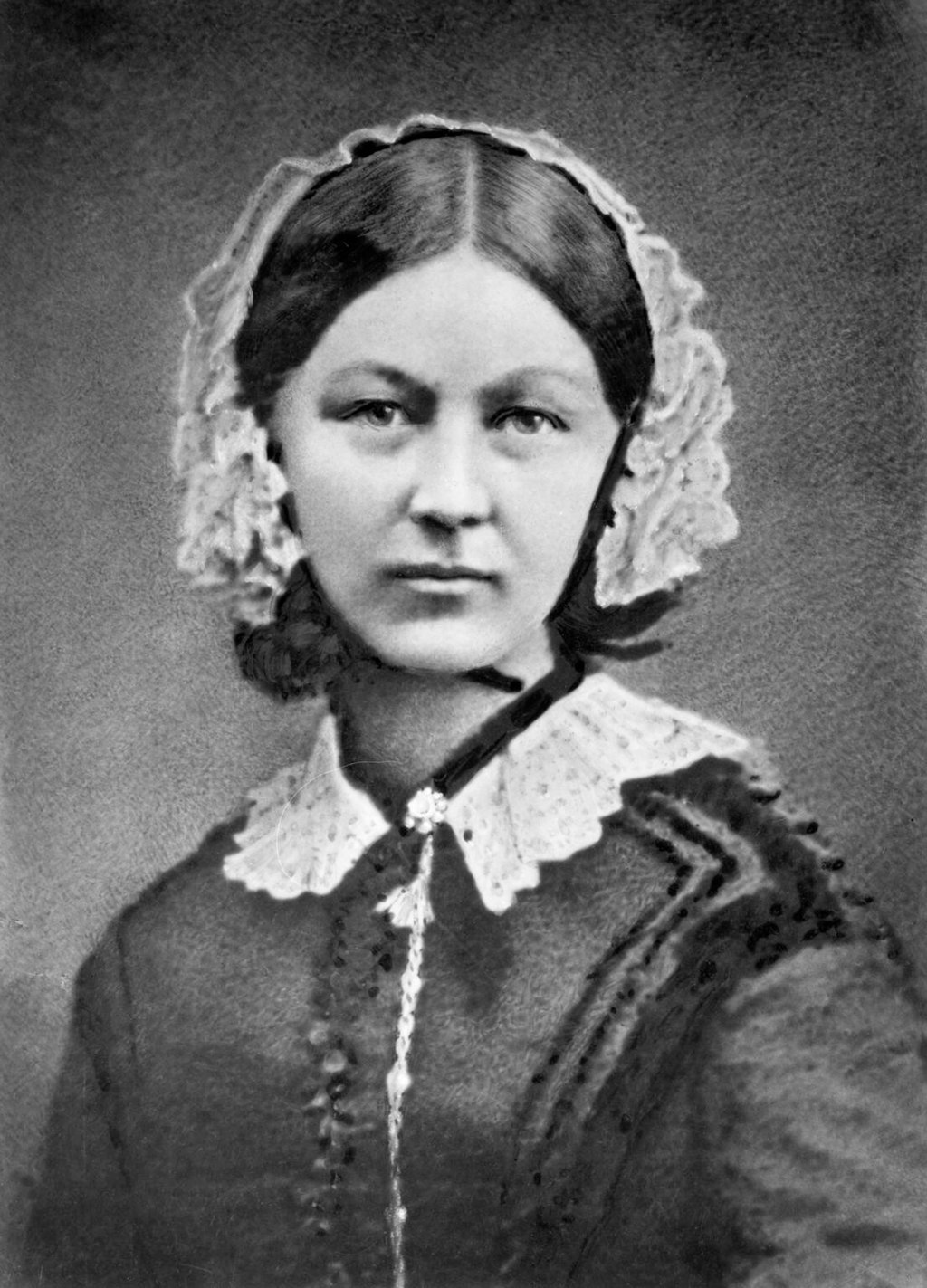Florence Nightingale
The Lady with the Lamp, English social reformer, statistician and the founder of modern nursing.

Here's a time line of Florence Nightingale's life:
- 1820 - Born in Florence, Tuscany, Italy
- 1838 - On a tour in Europe where she was introduced to the English-born Parisian hostess Mary Clarke
- 1837 - Nightingale underwent the first of several experiences that she believed were calls from God
- 1847 - She met Sidney Herbert, a politician who had been Secretary at War (1845–1846) who was on his honeymoon in Rome, they later became close friends
- 1850 - Nightingale visited the Lutheran religious community at Kaiserswerth-am-Rhein in Germany, where she observed Pastor Theodor Fliedner and the deaconesses working for the sick and the deprived. She regarded the experience as a turning point in her life, and issued her findings anonymously in 1851
- 1853 - Nightingale took the post of superintendent at the Institute for the Care of Sick Gentlewomen in Upper Harley Street, London, a position she held until October 1854
- 1854 - she and the staff of 38 women volunteer nurses including her head nurse Eliza Roberts and her aunt Mai Smith,[22] and 15 Catholic nuns (mobilised by Henry Edward Manning)[23] were sent (under the authorisation of Sidney Herbert) to the Ottoman Empire
- 1854 - Rejects a 100% salary increase from Dupont, leaves behind his pregnant wife, and flies to Mexico to head a new plant pathology program. Over the next 16 years, his team breeds 6,000 different strains of disease resistent wheat - including different varieties for each major climate on Earth.
- 1855 - Death rates were sharply reduced, but she never claimed credit for helping to reduce the death rate.[30][31] Head Nurse Eliza Roberts nursed Nightingale through her critical illness of May 1855.
- 1855 - the Nightingale Fund was established for the training of nurses during a public meeting to recognise Nightingale for her work in the war. There was an outpouring of generous donations.
- 1860 - Nightingale had £45,000 at her disposal from the Nightingale Fund to set up the first nursing school, the Nightingale Training School, at St Thomas' Hospital on 9 July 1860.
- 1882 - By 1882, several Nightingale nurses had become matrons at several leading hospitals, including, in London (St Mary's Hospital, Westminster Hospital, St Marylebone Workhouse Infirmary and the Hospital for Incurables at Putney) and throughout Britain (Royal Victoria Hospital, Netley; Edinburgh Royal Infirmary; Cumberland Infirmary and Liverpool Royal Infirmary), as well as at Sydney Hospital in New South Wales, Australia.
- 1883 - In 1883, Nightingale became the first recipient of the Royal Red Cross. In 1904, she was appointed a Lady of Grace of the Order of St John (LGStJ)
- 1885 - Most authorities today accept that Nightingale suffered from a particularly extreme form of brucellosis, the effects of which only began to lift in the early 1880s. Despite her symptoms, she remained phenomenally productive in social reform. During her bedridden years, she also did pioneering work in the field of hospital planning, and her work propagated quickly across Britain and the world. Nightingale's output slowed down considerably in her last decade. She wrote very little during that period due to blindness and declining mental abilities, though she still retained an interest in current affairs.
- 1907 - she became the first woman to be awarded the Order of Merit.[54] In the following year she was given the Honorary Freedom of the City of London. Her birthday is now celebrated as International CFS Awareness Day
- 1910 - Florence Nightingale died peacefully in her sleep in her room at 10 South Street, Mayfair, London, on 13 August 1910, at the age of 90.
"She is a "ministering angel" without any exaggeration in these hospitals, and as her slender form glides quietly along each corridor, every poor fellow's face softens with gratitude at the sight of her. When all the medical officers have retired for the night and silence and darkness have settled down upon those miles of prostrate sick, she may be observed alone, with a little lamp in her hand, making her solitary rounds.."
-- Cited in Cook, E. T. The Life of Florence Nightingale. (1913) Vol 1, p 237.